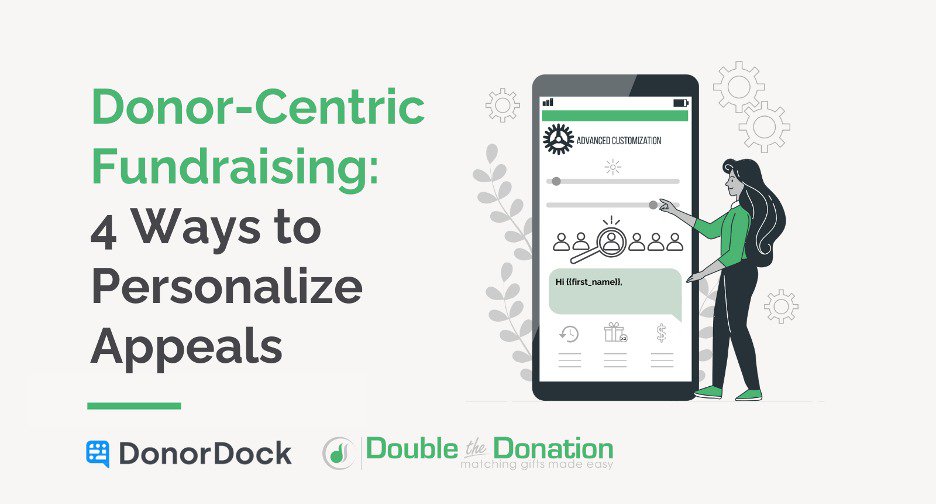In-kind donations are a game-changer for nonprofits, offering unique resources and opportunities for growth. These non-financial contributions are indispensable in driving nonprofit missions forward. This blog post dives into how to track, report, and acknowledge in-kind donations made to your nonprofit. While in-kind contributions have accounting challenges, their potential to enhance programs and engage the community cannot be overstated.
Table of Contents
- What are donations in-kind?
- Tracking and reporting in-kind donations
- In-kind donation letter of acknowledgment template
What are Donations In-Kind?
Donations in-kind (also called in-kind donations and in-kind gifts) are donations made with goods or services instead of money. Rather than giving cash, people donate things like food, clothes, or their specific skills. Additionally, businesses often contribute to nonprofits by donating services, products, or technology, leveraging their resources to make a meaningful impact in the community. This collaborative effort between individuals and businesses strengthens the nonprofit sector and enables organizations to fulfill their missions effectively.
Types of In-Kind Donations
- Donations of goods or property
Many goods and properties that are donated to nonprofits count as an in-kind donation. These include things like food, medical supplies, art supplies, tech upgrades, vehicles, etc. This category also includes intangible property such as copyrights, as well as items donated for fundraisers or put up for auction. - Donations of services
When it comes to reporting, not all volunteer hours are counted equally. Volunteering professional services (like legal, consulting, or accounting services) counts as an in-kind donation - Asset creation
If volunteers create or increase the value of an asset, then it may qualify as an in-kind gift. An example of this would be houses built for Habitat for Humanity. - A donor directly paying a bill to a third party on the nonprofit’s behalf
If a donor pays the electricity bill for a community center, this can be considered an in-kind donation.
What Donations Are Excluded?
Not all goods and services given to a nonprofit count as in-kind donations. If it is something designated for a specific recipient aside from your nonprofit, then it does not qualify as an in-kind donation.
Additionally, if it's not something your organization would have spent money on or normally used, then it doesn't count. For example, if a landscaping company volunteers to maintain the organization’s grounds, but it’s a service your nonprofit wouldn’t usually pay for.
And finally, volunteer hours typically don’t qualify as a donation in-kind. The exception is when the volunteer is offering a specialized skill.
Tracking and Reporting In-Kind Contributions
Keeping track and reporting in-kind donations is crucial for nonprofits for several reasons: it ensures accurate financial records, complies with IRS requirements, and allows donors to claim tax deductions.
The process can get complicated, but the key is to properly document and acknowledge each in-kind contribution in your accounting records. Not only does this practice help meet legal standards, but it also serves as a vital resource for planning and internal management. Record in-kind donations as soon as they are received, and at the very least, update your records every 6 months to keep everything in order.
How to record in-kind donations?
Whether in a spreadsheet or nonprofit CRM, all in-kind donations should be recorded by your nonprofit. Documentation should include the donor’s name, a description of the donation, its value, and data, like receipts, that show the value of the donation.

In-kind donations are recorded based on their fair value. Fair value is the current market value of the donation. This means when an item or service is donated, its recorded value is what it would realistically sell for in the market at that time. This approach ensures transparency and accuracy in how donations are valued and reported.
For IRS compliance, you’ll also need to send an acknowledgment letter to the donor for all in-kind donations of $250 or more.
A nonprofit CRM that allows you to record in-kind contributions helps to simplify the tracking process. With a CRM you’re able to record the gift, its value, date received, and attribute it to a specific donor. You are also able to upload documentation that supports the value of the donation. Plus, you can track whether an acknowledgment letter and thank you have been sent yet.

Sending a letter of acknowledgment
Not only is it important to acknowledge and thank donors for giving an in-kind contribution, but acknowledging in-kind donations is required by the IRS. While it doesn’t need to happen immediately, best practices suggest that you send out your acknowledgment letter within 30 days or less from the receipt of your donation.
Nonprofits should provide a receipt to donors for all donations, regardless of the amount. The receipt can be a letter, a postcard, an email message, or a form created for the purpose. For donations worth $250 or more, a letter of acknowledgment is required.
What to Include in Your Acknowledgement Letter
*It's important to note that rules and regulations can change, so it's best to consult the Internal Revenue Service (IRS) guide to substantiating gifts for the most accurate and up-to-date information on reporting requirements for Donation In-Kind.
Your gift acknowledgment should include the following:
- Name of the organization: The nonprofit organization that received the donation must be identified on the receipt
- Statement of tax-exempt status: The receipt should include a statement that the nonprofit is a public charity recognized as tax-exempt by the IRS under Section 501(c)(3)
- Date of donation
- Description of donation: A description of the property, goods, or services donated (It is the donor’s responsibility to assign a value to the donation for tax purposes)
- Disclosure statement for quid pro quo contributions: If the donor receives goods or services in exchange for their donation and the value of those goods or services exceeds $75, the nonprofit must provide a written disclosure statement to the donor
Example In-Kind Donation Acknowledgement Letter Template
Need a place to begin? The following in-kind gift acknowledgment letter template can be copied and pasted into any email program, just replace the bracketed fields with your donor’s information.
With DonorDock, All {{bracketed fields}} will auto-populate based on the donors you select.
Where there is a {{ line | dividing }} you will need to choose which option you would like to use.
{{"now" | date:"MMMM dd, yyyy"}}
{{donor.name}}
{{donor.address1}}
{{donor.address2}}
{{donor.city}}, {{donor.state_or_province}} {{donor.postal_code}}
{{donor.salutation}},
We would like to express our heartfelt gratitude for your generous in-kind donation to {{organization.name}}. Your contribution of {{gift.payment_description}} on {{gift.date | date:"MMMM dd, yyyy"}} is deeply appreciated and will make a significant impact on our mission to [____Briefly Describe Organization's Mission or Purpose____]. *No substantial goods or services were provided to you[, other than intangible religious benefits,] in exchange for your contribution.”
Once again, thank you for your generosity and support of our organization. Your commitment to our cause is instrumental in enabling us to continue our work and make a difference in the lives of those we serve.
With appreciation,
[Your Name]
[Your Title
{{organization.name}}
{{organization.address1}
{{organization.city}}, {{organization.state_or_province}} {{organization.postal_code}
{{organization.email}} | {{organization.phone}}
Conclusion
In-kind donations play a crucial role in supporting nonprofits and their missions. However, it's important to know what qualifies as an in-kind donation and how to properly track and report them. By understanding these concepts and following the necessary steps, both nonprofits and donors can ensure that their contributions have maximum positive impact.














